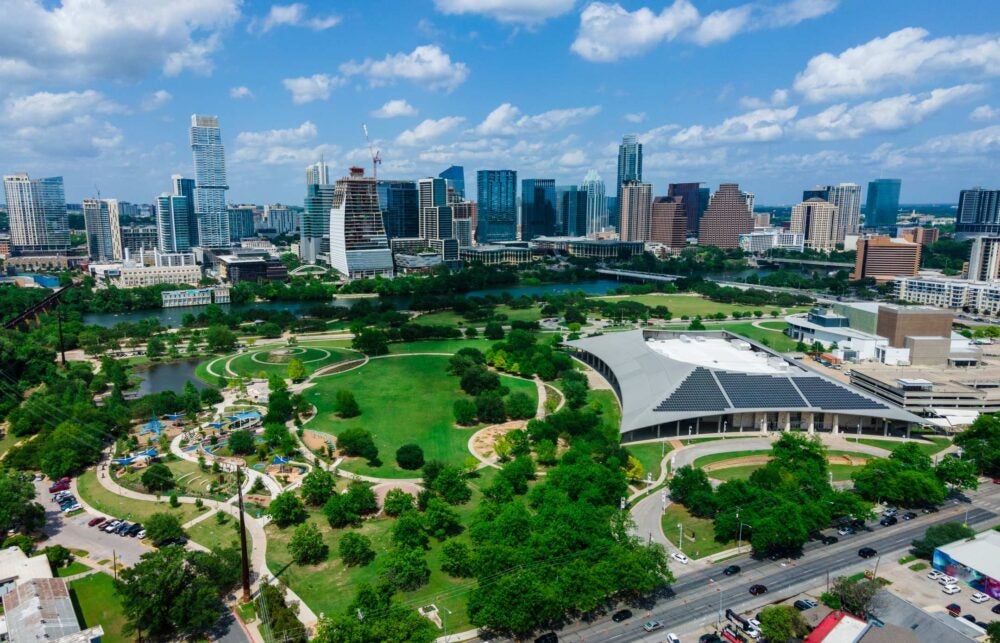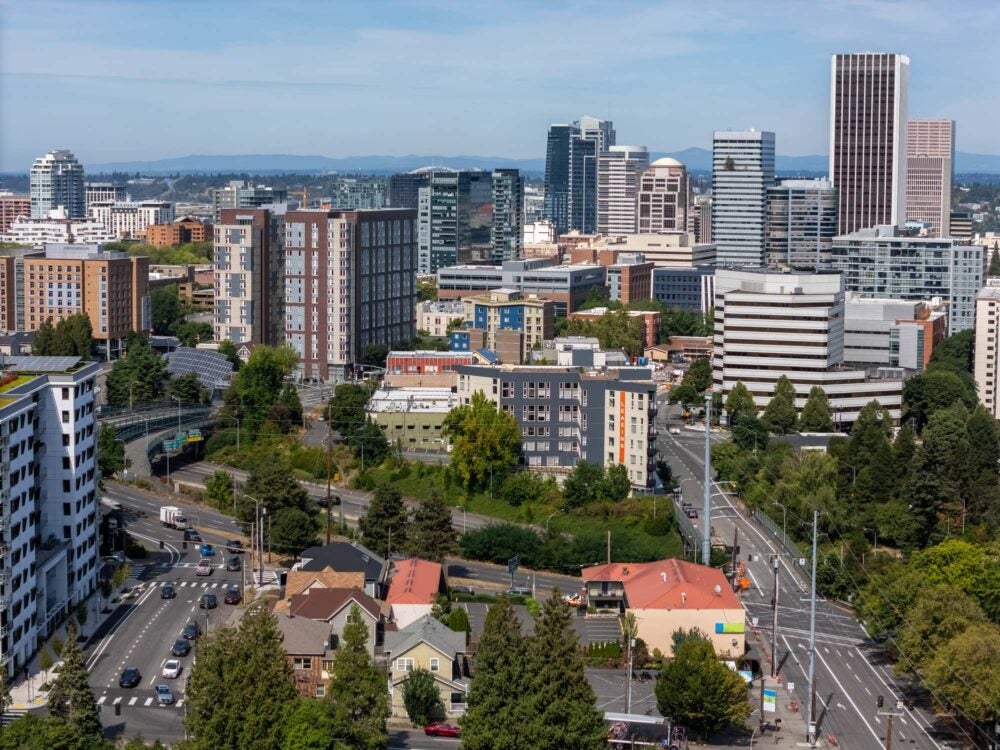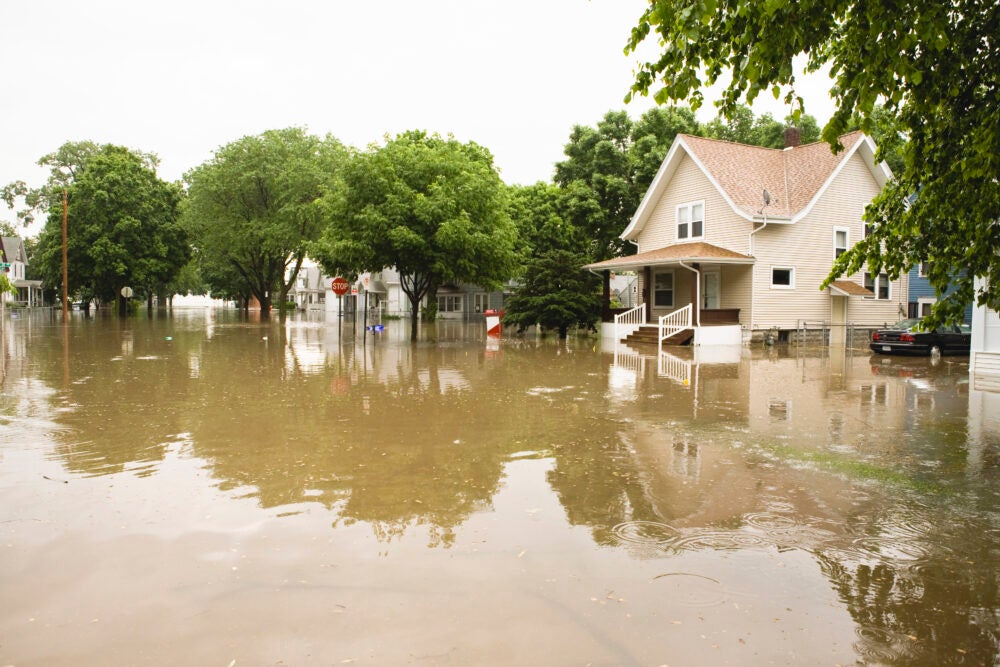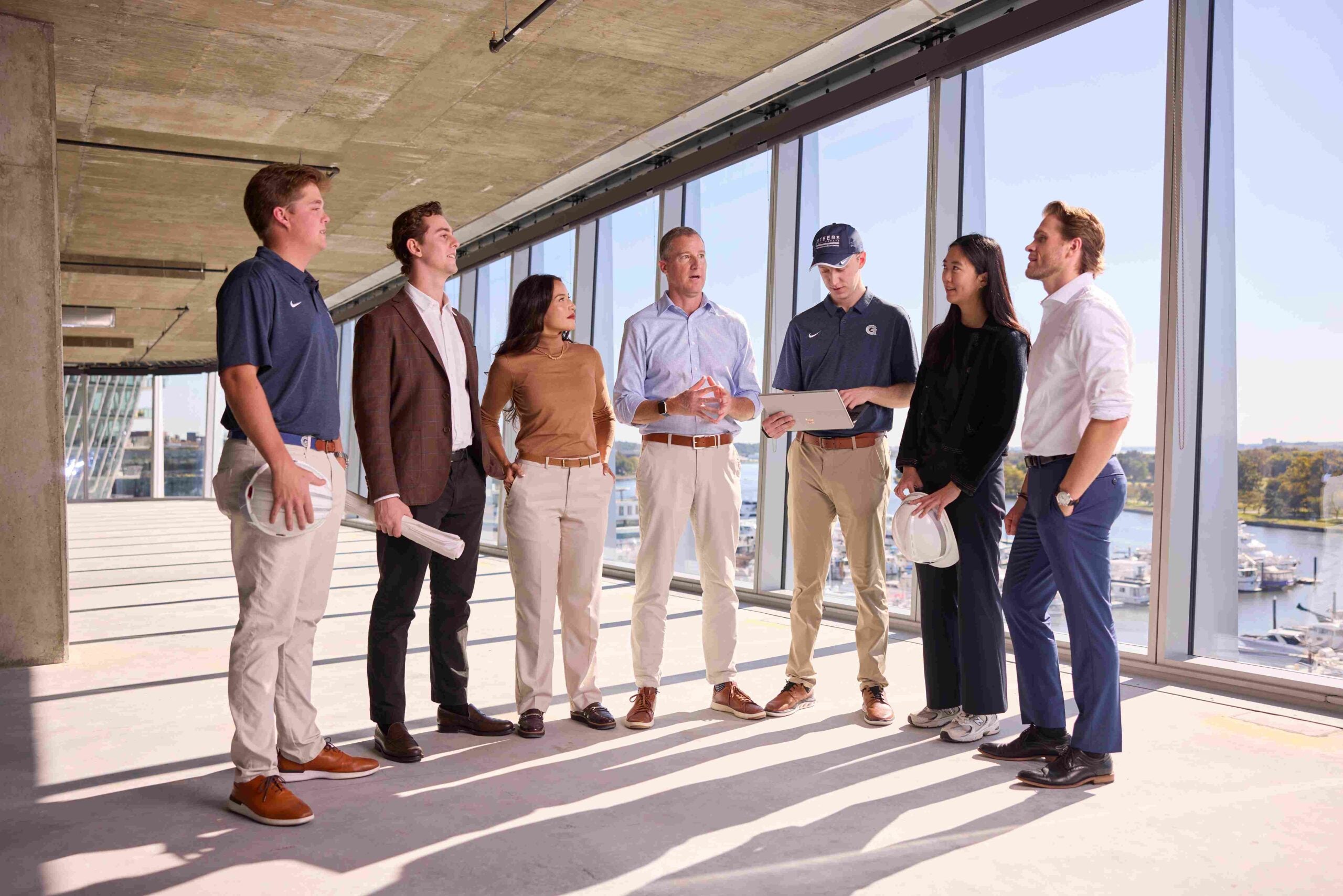
Blog
What to Look for in a “Green” City | Understanding Sustainable Cities
Blog
In an era where urban areas are expanding at an unprecedented rate, the concept of greener cities has emerged as a beacon of sustainable development. The Steers Center for Global Real Assets (formerly Real Estate) has focused a portion of its real estate curriculum on the concept and exploration of the manner in which cities can decarbonize their physical footprint. It is important to note that the built environment is inherently unsustainable as currently executed due in part to 40% of global greenhouse gas emissions being attributed to the built environment. The reality, as discussed within the Steers Center, is that we need to be focused on creating “greener” opportunities that are less harmful to the natural environment.
Today, we delve into the idea of greener cities and explore their pivotal role in fostering environmentally friendly urban environments that balance economic growth, social equity, and ecological sustainability.
Understanding the essence of a greener city is crucial as the global community grapples with the challenges of rapid urbanization and environmental degradation. At their core, greener cities are urban areas that prioritize environmental protection, efficient resource utilization, and the overall well-being of their residents. These cities seek to lower their carbon emissions, cut down on pollution, and improve the overall quality of life for their residents.
To meet these ambitious goals, green cities encourage the adoption of renewable energy sources like solar, wind, and geothermal power. They invest in sustainable transportation systems, including comprehensive public transit networks, dedicated cycling lanes, and pedestrian-friendly infrastructure. In addition, they implement advanced waste management practices to reduce landfill use and promote recycling and composting. Furthermore, infrastructure like parks, green roofs, and urban forests are integrated into city planning to create healthier and more livable spaces.
The world’s greenest cities are often evaluated based on key indicators such as energy consumption, greenhouse gas emissions, air and water quality, waste management practices, and access to greener spaces. Cities like Copenhagen, Denmark, and Vancouver, Canada, are renowned for their commitment to sustainability and serve as models for greener urban development.
Greener cities offer a multitude of environmental benefits by significantly reducing pollution levels. Using renewable energy decreases dependence on fossil fuels, helping to reduce greenhouse gas emissions and lessen the effects of climate change. Efficient waste management practices decrease the amount of waste sent to landfills, reducing methane emissions and soil contamination. Sustainable transportation options reduce air pollutants like nitrogen oxides and particulate matter, leading to cleaner air and improved public health.
From a social perspective, greener cities enhance community well-being by providing accessible green spaces that promote physical activity and mental health. Parks, community gardens, and urban forests enhance the city’s beauty while also acting as social spaces where residents can connect and participate in recreational activities. Sustainable urban planning that promotes walkability and cycling contributes to healthier lifestyles and reduces the prevalence of diseases associated with sedentary behavior.
Economically, investing in greener cities can stimulate job creation and attract businesses focused on sustainability. The green economy includes sectors such as renewable energy, energy efficiency, sustainable construction, and environmental consultancy, all of which offer employment opportunities. Additionally, energy-efficient buildings and infrastructure can lead to significant cost savings for both individuals and businesses through reduced utility bills and maintenance costs.
Urban design and architecture are critical in shaping more sustainable cities. Integrating sustainable practices in construction and development helps minimize the environmental impact of buildings, which are major consumers of energy and resources. Energy-efficient buildings utilize technologies like high-performance insulation, energy-efficient windows, and smart energy management systems to reduce energy consumption. The use of eco-friendly materials such as recycled steel, bamboo, and low-VOC (volatile organic compound) paints minimizes environmental harm.
Innovative architectural techniques like green roofs and vertical gardens serve multiple functions. Green roofs provide insulation, reduce heating and cooling demands, and absorb rainwater, decreasing stormwater runoff. Vertical gardens improve air quality by filtering pollutants and can contribute to local food production when used for urban agriculture.
Transportation is a major source of urban pollution and greenhouse gas emissions. Greener cities tackle this problem by prioritizing sustainable transportation choices. By developing efficient, affordable, and accessible public transit systems, they encourage residents to use buses, trains, and trams instead of private vehicles. Expanding cycling infrastructure through dedicated bike lanes and bike-sharing programs encourages cycling as a practical mode of transportation. Designing pedestrian-friendly streets with safe sidewalks and crossings fosters walking, reducing dependence on motor vehicles.
Promoting electric vehicles (EVs) is another crucial strategy. By investing in EV charging stations and offering incentives for EV ownership, cities can cut emissions from the transportation sector. Additionally, car-sharing and ride-sharing programs that use electric or hybrid vehicles contribute to more sustainable mobility.
Integrating nature into urban environments is vital for creating sustainable and livable cities. Green spaces provide numerous environmental benefits, including carbon sequestration, improved air and water quality, and enhanced biodiversity. They also offer social and psychological benefits by providing areas for recreation, relaxation, and community gatherings. Urban planning that incorporates greener corridors and networks connects parks and natural areas, promoting ecological connectivity and supporting wildlife.
Investing in greener cities involves allocating resources to real assets that contribute to sustainability. Real assets include physical assets like buildings, infrastructure, and land, which are essential for the functioning of urban environments. By investing in energy-efficient buildings, renewable energy installations, and sustainable infrastructure projects, investors can play a significant role in promoting greener cities.
Different types of real assets contribute to greener urban development:
Investing in greener cities may offer both financial returns and societal benefits. More sustainable real assets often have lower operating costs due to energy savings and can command higher market values. Additionally, these investments contribute to environmental conservation, public health improvements, and enhanced quality of life for urban residents.
One of the primary challenges in achieving greener city status is balancing the demands of urban population growth with environmental sustainability. Rapid urbanization can strain natural resources, increase waste production, and exacerbate pollution. Cities must implement strategies that accommodate growth while minimizing environmental impacts.
To overcome these challenges, cities are adopting innovative approaches:
Urban development often leads to habitat loss and reduced biodiversity. Greener cities address this by integrating natural habitats into the urban fabric. Initiatives like creating urban wildlife corridors, protecting wetlands, and promoting urban agriculture contribute to biodiversity conservation and provide ecosystem services.
Technological innovation is at the forefront of shaping the future of greener cities. Advancements in smart city technologies enable better resource management through data analytics, sensors, and automation. Smart grids optimize electricity distribution, reducing energy waste. Intelligent transportation systems enhance traffic flow and reduce congestion. Waste management systems equipped with sensors optimize collection routes and schedules.
As climate change impacts become more pronounced, greener cities are focusing on resilience and adaptation strategies. This includes designing infrastructure that can withstand extreme weather events, implementing flood defenses, and developing emergency response plans. Green infrastructure plays a crucial role in enhancing urban resilience by absorbing excess rainwater and reducing heat stress.
International collaboration and supportive policies are essential for advancing greener city initiatives. Global agreements like the Paris Agreement and the Sustainable Development Goals provide frameworks for action. Cities are joining networks such as C40 Cities and the Global Covenant of Mayors to share best practices and commit to sustainability targets.
Green cities are more than a trend; they are a necessity to ensure a more sustainable future for our rapidly urbanizing world. By integrating environmental considerations into every aspect of urban planning and development, greener cities improve the quality of life for residents, protect natural resources, and stimulate economic growth.
Investments in sustainable real assets not only yield financial returns but also contribute to the global effort to combat climate change and environmental degradation. As we look toward the future, embracing the principles of green urbanism will be key to building resilient, vibrant, and sustainable cities for generations to come.
Blog
Research
Blog


